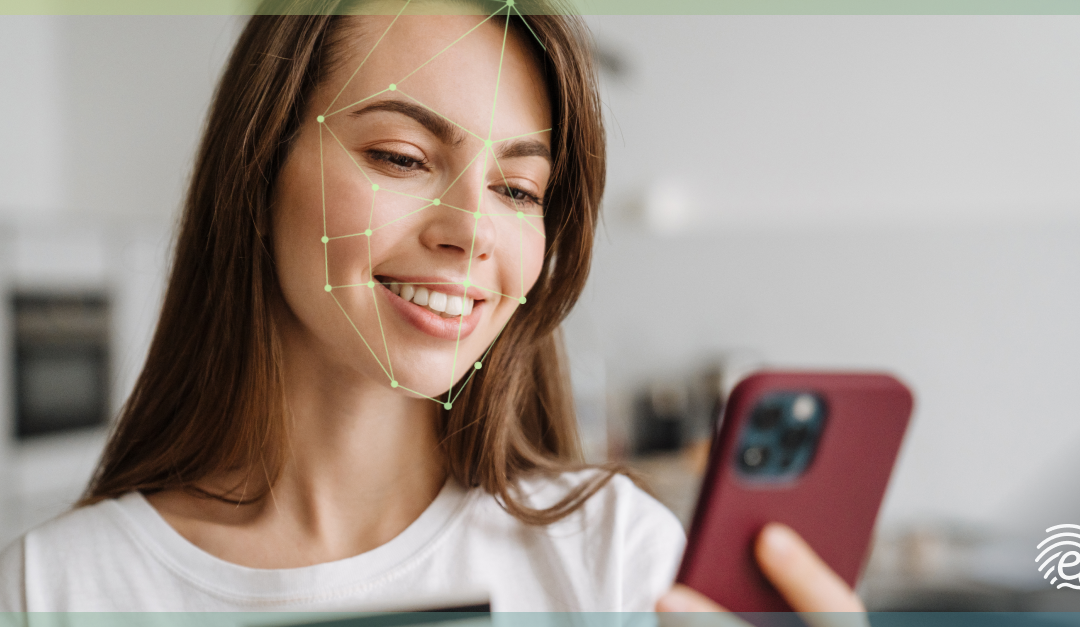10 benefits of biometric authentication
The concept of biometrics refers to the measurement and analysis of physical or behavioural human characteristics, such as fingerprints, irises, faces, or even smiles. This is not new, but its use has really taken off in the last decade due to the world’s digitalisation. Nowadays companies, apps, administrations, and even phones and computers use it for online identity verification, where biometric authentication plays a key role.
There are many benefits of biometric authentication, and biometric technology has countless uses and applications in the digital world. Here are 10 of them:
- Higher security and reliability in access control: both at physical (buildings or restricted spaces) and logical spaces (mobiles, tablets, and IT equipment).
- Increased and ensured privacy as it encrypts customers’ personal data through a unique and personal key, adding to the difficulty of falsifying biometric data.
- Practical and fast user experience, accessible for everyone.
- Greater face-to-face control without passwords, PIN, or personal card. User’s fingerprint or hand geometry can also be used.
- Non-transferable as there is a unique set of biometric data for each person.
- It makes identity fraud impossible. It becomes increasingly difficult to forge or steal biometric data.
- It helps cut costs: the hardware and software required for biometric authentication are very easy to implement and use.
- Since biometric authentication does not require the users to use passwords nor usernames, it is able to guarantee the highest security in the identity proofing process.
- As it increases security, efficiency, and reduces the possibility of internal fraud, the use of biometric authentication technology promotes better corporate image. In addition, companies that implement biometrics are usually also committed to research and development, which generates a better perception of the company’s image for the public.
- Combined with other technologies, it increases its scope (mobile payments, hospital environments…), making it much safer to use.
Learn how to gain competitive edge thanks to a fully digital and compliant onboarding in this whitepaper.
Benefits of using biometrics: 7 applications of biometric authentication technology in banking
One of the main benefits of biometric authentication for facial recognition is its smooth integration into everyday tasks. This allows users and companies (such as banks, insurance companies or financial institutions) to save time and ensure the security of processes that would otherwise be more complex or require the physical presence of the customer.
Let’s take SmileID as an example. This new standard for face biometrics works from any device and channel. It identifies customers remotely and securely via automatic video in real time, which not only saves the customer unnecessary travel to the commercial store, but it also saves the company unnecessary costs.
These benefits of using biometrics can be achieved when companies implement biometric authentication in their use cases, such as:
- Online and offline contracting with OTP or SmilelD as authentication methods. They are agile, advanced and fully secure solutions.
- Mobile payments. SmileID facilitates payments in online shops or to retailers by simply smiling at the camera.
- Cash withdrawals at ATMs with biometric facial recognition. As with in-store payments, using SmilelD technology enables biometric facial authentication for cash withdrawals at ATMs, providing greater security and convenience for the customer.
- Access to apps. SmilelD can also be used to allow the user to access applications on their smartphone.
- As a second authentication factor, it provides greater security for systems accessing.
- E-signature. A qualified e-signature solution adapts to any use case and security level required, while offering customers a fast and seamless experience.
- Customer queue management in sales offices, thereby increasing not only security, but also personalising the service by selecting the appropriate agent to assist the previously authenticated customer.
- Contactless onboarding with biometric passport. The key advantage of the biometric passport is its safety: no one can steal the user’s identity since it contains a unique microchip which carries the user’s biometric data such as a digital map of their face, fingerprints, or iris.
This may also interest you: European Digital Identity Wallet
Other uses & benefits of biometric authentication
- Access to facilities (offices or restricted places) with facial biometrics. This reduces costs (creation, replacement, updating) and eliminates the risk of impersonation, loss, or theft.
- Online account opening through facial biometric recognition. It provides simplicity, security and immediacy. A biometric comparison is made, and a verification is carried out with more than 21 security measures. It even allows for additional background checks.
- Digital customer onboarding: fast, in real time and paperless. This eIDAS-compliant solution allows new customers to be signed up in seconds through a qualified electronic signature based on automatic video identification. In fact, chatbots have become one of the most common new formats for fully digital onboardings.
Biometric authentication technology: Qualified Electronic Signature
Security is paramount when it comes to accessing banking data and a breach of that security can lead to a major customer and bank vulnerability.
That is why state-of-the-art identity verification and two-step authentication systems based on AI are increasingly being implemented to carry out digital customer onboardings and identity proofing processes at banks and financial institutions. This ensures access is exclusively granted to the user when he/she has passed two or more different tests confirming his/her identity.
In this matter, the combination of the qualified electronic signature and biometric authentication as a second authentication factor makes it incredible hard to compromise either the institutions nor the user’s data and security. This winning team works as an all-in-one process. The system requests the electronic signature from the user, and then asks him to show his face, as a second authentication factor, to perform the relevant security checks to validate his identity. Finally, once validated, it will grant access and perform the requested action on behalf of the user.
Discover here how to expand your business across Europe with the highest levels of regulatory enforceability and trust.




